This week on WCET Frontiers, we are happy to welcome back Niki Bray, Instructor and Instructional Designer with the School of Health Studies at the University of Memphis. Niki is here today to discuss another aspect of adaptive learning: research-based principles for developing effective courses. Niki reviews why higher education leaders should have a solid understanding of the design process and principles of multimedia learning which help increase generative processing.
Thank you, Niki, for this great post!
Enjoy the read and enjoy your day,
-Lindsey Downs, WCET
Why Do You, A Higher Ed Leader, Need to Understand Design?
That’s a great question! In my work with universities’ who are attempting to transform classroom practices, one of the greatest barriers to achieving their goals is you – the Higher Education leader!
There is an overwhelming lack of understanding of what is, or will be, required to transform the classroom by those who make decisions about the work faculty are involved in. Transforming the classroom to meet current demands by stakeholders (like our students, our faculty, our communities, etc.) is challenging work. It requires tremendous effort on the part of faculty. And if you, as an academic leader, truly care about this transformation, you need to read this blog carefully. Today’s goal: help you gain a greater understanding of what faculty, and potentially instructional designers (and other faculty support personnel), must go through to make this transformation possible. They need your support to be successful.
The End of Poorly Designed Courses
It’s no secret that poorly developed courses abound – just ask almost any student. The good news is that we now have lots of research on how to improve the way course content is presented to learners, including those delivered using technology. In my last post, we discussed how to design courses using the Backward Design method, a process that ensures proper alignment so that we know students learn and are assessed on what we intended them to know and be able to do in the course. In this post, we will learn how to improve the content learners actually see by the end of the course. Designing an effective course is just the beginning; the hard work, the critical work, lies in the development of the content, or, what the learner actually experiences.
12 Principles of Multimedia Learning
Let’s dig a little deeper into improving the development of the content in your fully aligned courses, by discussing the use of multimedia principles.
Before we dive in, let’s be sure we are all clear on what is meant by the term multimedia learning. According to Richard E. Mayer, “multimedia learning refers to learning from words and pictures” (2009, Loc. 155 Kindle). Pretty simple concept, huh? If it is so simple, why do most courses violate these principles time and again?
Developed by Richard E. Mayer, the 12 Principles of Multimedia Learning are based upon empirical research (The Cambridge Handbook of Multimedia Learning) and are grounded in learning science. These 12 principles are divided into the following three categories: principles that reduce extraneous processing, principles that manage essential processing, and principles that increase generative processing. See the tables below for further explanations of each principle.
1. Principles That Reduce Extraneous Processing (Causes Cognitive Overload) – “cognitive processing that does not serve the instructional goal and is caused by poor instructional design” (Mayer, 2009, Loc. 1099 Kindle).
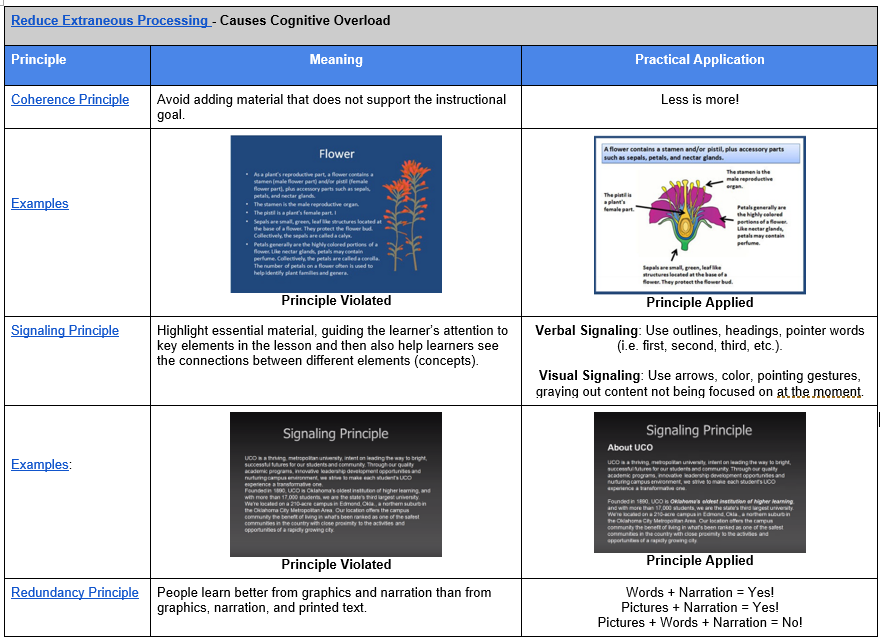
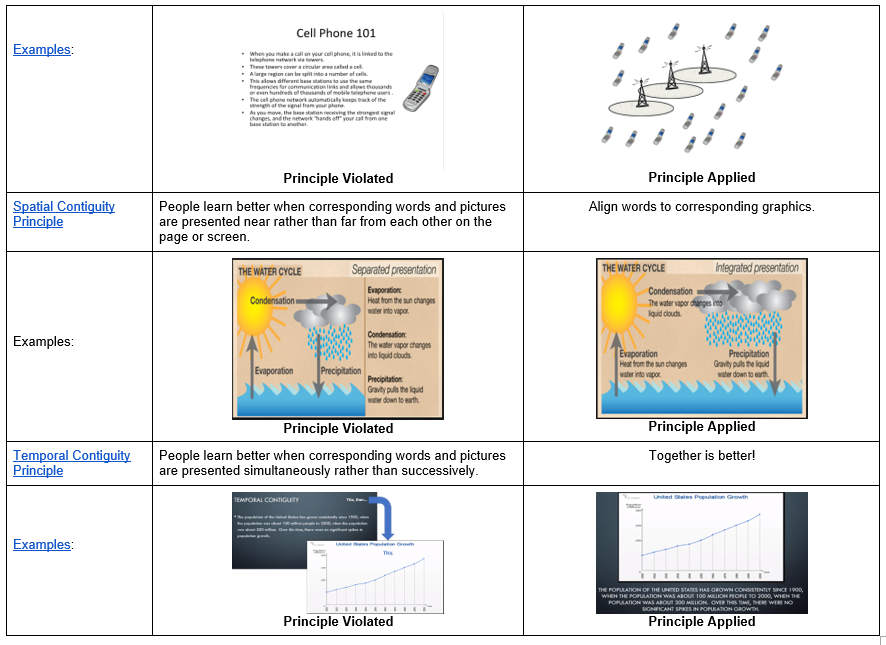
Reduce Extraneous Processing PDF
2. Principles That Manage Essential Processing – “cognitive processing that is required to represent the material in working memory and is determined by the complexity of the material” (Mayer, 2009, Loc. 1099 Kindle).
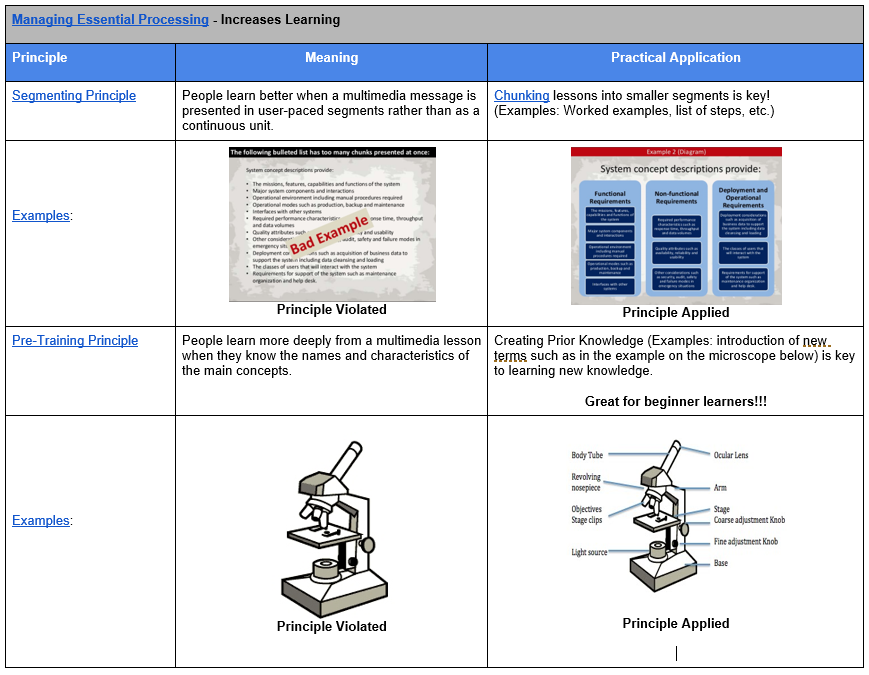
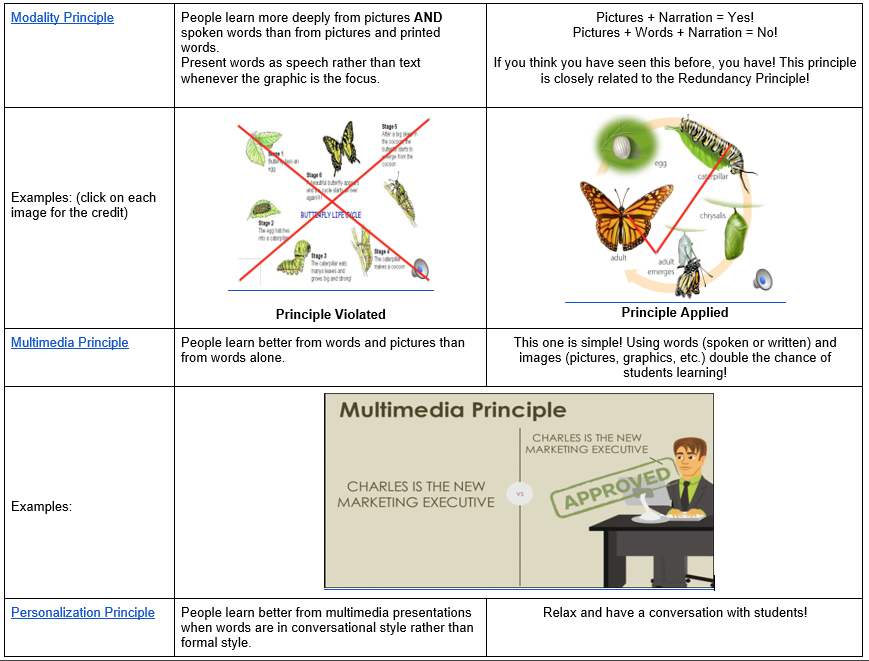

Principles That Manage Essential Processing
3. Principles That Increase Generative Processing – “deep cognitive processing including organizing and integrating the material” (Mayer, 2009, Loc. 1099 Kindle).
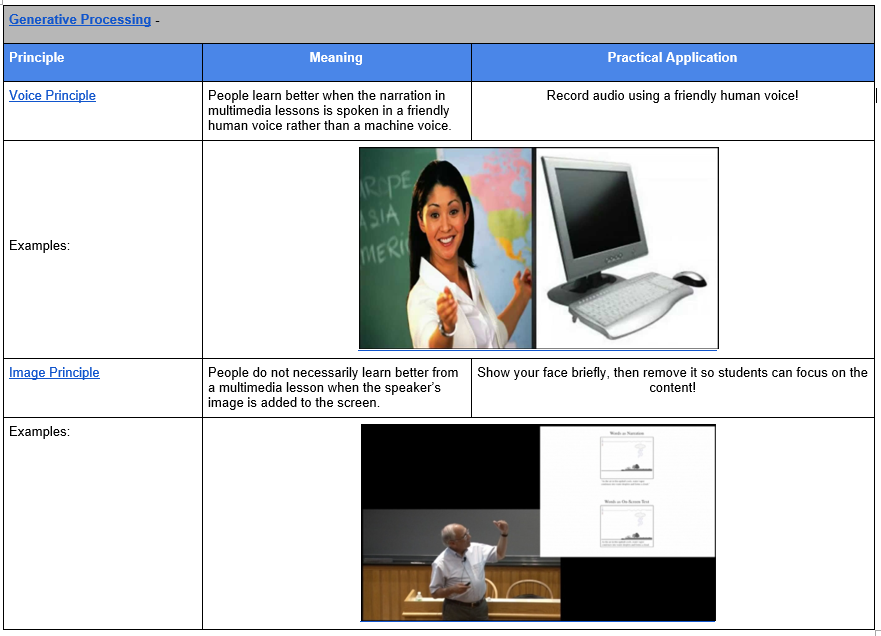
Generative Processing PDF
Conclusion
As an academic leader, your influence is beyond powerful in transforming the classroom to better meet the demands of current stakeholders. While you have little to no direct ability to improve courses at your institution, you do have the power to support those who do.
There is pain in the transformation process and it is vital that academic leaders have a clear understanding of that pain. Having this understanding will allow you to be empathetic and supportive of those in the trenches working to redesign the learner experience and, ultimately, learning.
Understanding the importance of backwards design (or some other effective design practice) and the impact proper use of the principles of multimedia learning have on learning is the first step to transforming classrooms across your campus. The next step is providing support – be it course releases, additional stipends, or some other incentive valued by your faculty.
Those institutions having success with the transformation process across this country understand that faculty must be brought to the table on day one and more than adequate support must be provided on an individual faculty basis. Do you see why you, a higher ed academic leader, need to understand design?

Niki Bray
Instructor|Instructional Designer
School of Health Studies
University of Memphis
@adaptivechat








